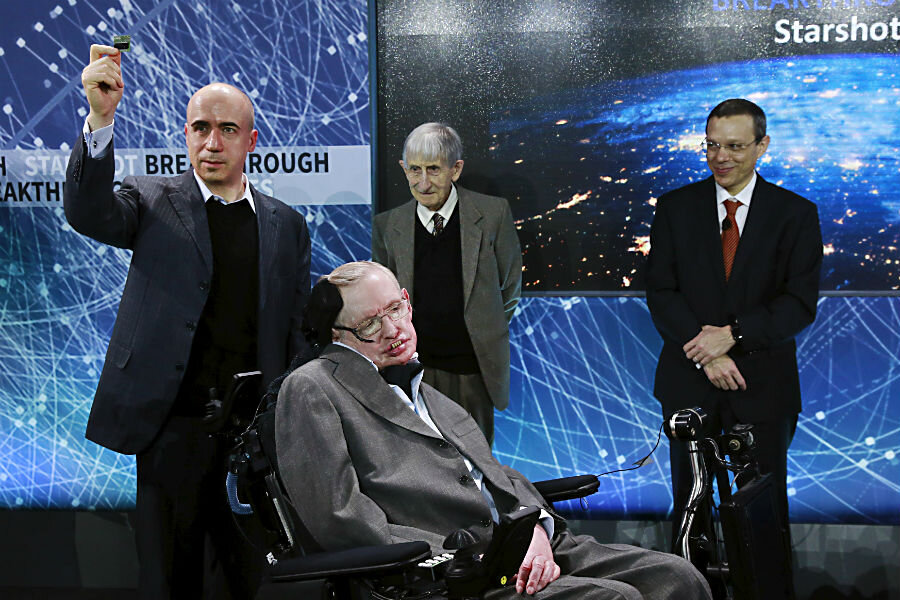Sending robots to Alpha Centauri? Stephen Hawking is on it.
Loading...
A new research initiative could provide the building blocks for a program that would send robots trillions of miles into space to better understand our neighboring star system.
Billionaire investor Yuri Milner announced the Breakthrough Starshot project, the latest in Mr. Milner’s Breakthrough Initiatives started in 2015.
Breakthrough Starshot aims to send data-seeking nanocraft to Alpha Centauri, the nearest star system to the solar system, using laser propulsion. While the Breakthrough board of Milner, physicist Stephen Hawking, and entrepreneur Mark Zuckerberg just announced Starshot on Tuesday, they say it may not launch for 20 years, conservatively – and wouldn't reach Alpha Centauri for another 20 after that, despite traveling at one-fifth the speed of light.
"We came to the conclusion it can be done: interstellar travel," Milner told The New York Times. He added that he hopes medicine would advance enough through the years of Starshot's development to allow him to live to see its launch.
"The human story is one of great leaps," he said in a Breakthrough release. "Fifty-five years ago today, Yuri Gagarin became the first human in space. Today, we are preparing for the next great leap – to the stars."
Prior to Starshot, Milner backed the Breakthrough Listen extraterrestrial communication project, launched last year, and the Breakthrough Message program, which aims to send digital messages through deep space.
"It's time to open the era of interstellar flight, but we need to keep our feet on the ground to achieve this," said former NASA Ames Research Center director Pete Worden, who will head the Starshot initiative.
Starshot's research phase will cost around $100 million, not taking into account what the final mission would end up costing – a sum Milner told the Times could reach $10 billion.
Milner and Mr. Worden's end goal for Breakthrough Starshot is to send a mothership containing thousands of gram-scale nanocraft into orbit. There, 100 gigawatt phased laser "light beamers" would push one hundred atom-thick "lightsails" attached to the nanocraft to propel them to the stars where their cameras would send data back to Earth.
It sounds like science fiction and the team behind Starshot knows how tough it could be to eventually pull off, although they believe the technology needed to complete the mission is either currently available or will be in the near future. Concerns include the actual feasibility of the project and the durability of the tiny craft over 20 years of perilous space travel, among others, and Breakthrough has opened its list of potential challenges to public comment.
"The problems remaining to be solved – any one of them are showstoppers,” Worden told Reuters.
Travel to Alpha Centauri 4.37 light years (25.6 trillion miles) away would take today's spacecraft 30,000 years to complete, according to Breakthrough. With the light beaming technology, though, nanocraft could end up at the star system within two decades, allowing for an up-close look at a part of the universe humans may never reach.
"Earth is a wonderful place, but it might not last forever," Mr. Hawking said. "Sooner or later, we must look to the stars. Breakthrough Starshot is a very exciting first step on that journey."








